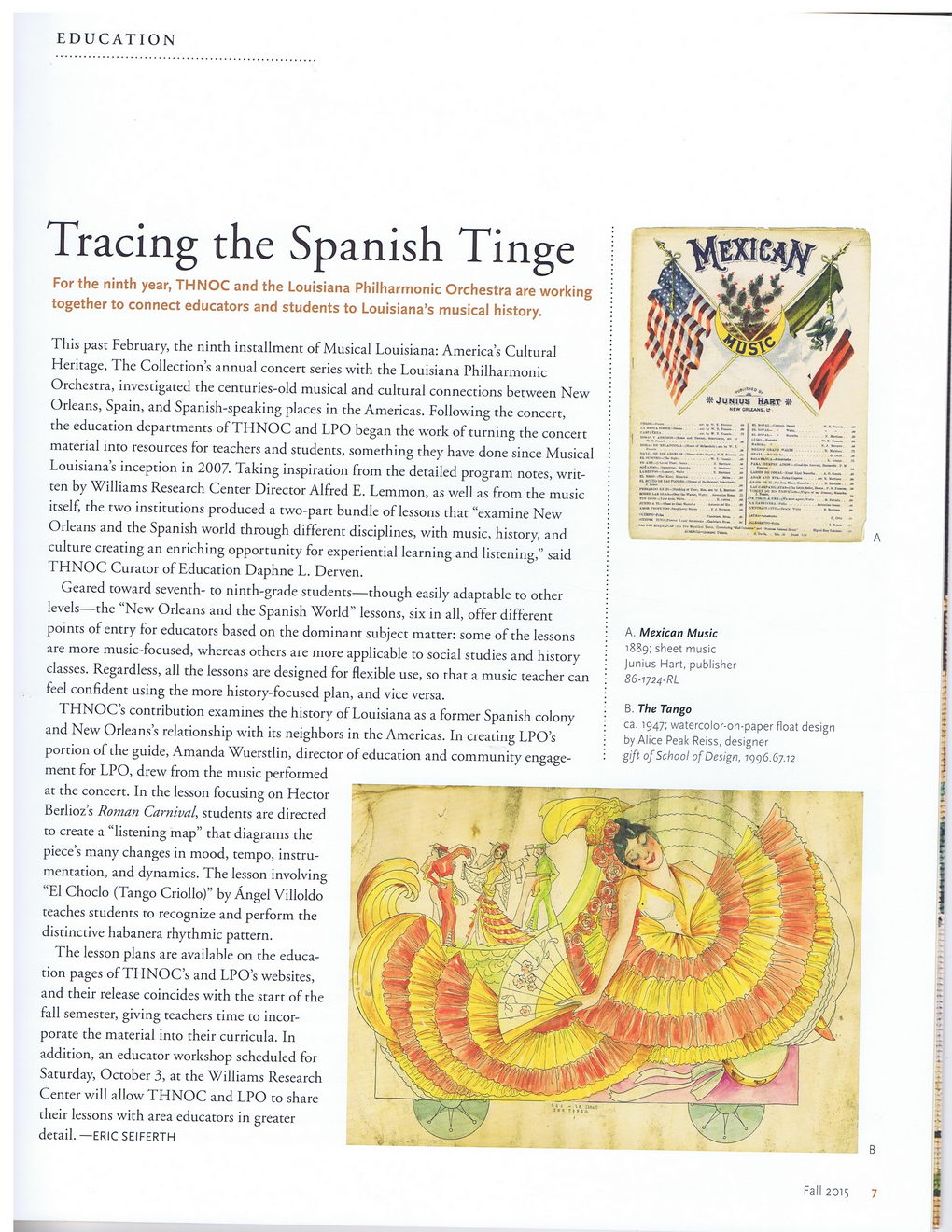This text was obtained via automated optical character recognition.
It has not been edited and may therefore contain several errors.
EDUCATION Tracing the Spanish Tinge For the ninth year, THNOC and the Louisiana Philharmonic Orchestra are working together to connect educators and students to Louisiana’s musical history. This past February, the ninth installment of Musical Louisiana: America’s Cultural Heritage, The Collection’s annual concert series with the Louisiana Philharmonic Orchestra, investigated the centuries-old musical and cultural connections between New Orleans, Spain, and Spanish-speaking places in the Americas. Following the concert, the education departments of THNOC and LPO began the work of turning the concert material into resources for teachers and students, something they have done since Musical Louisiana’s inception in 2007. Taking inspiration from the detailed program notes, written by Williams Research Center Director Alfred E. Lemmon, as well as from the music itself, the two institutions produced a two-part bundle of lessons that “examine New Orleans and the Spanish world through different disciplines, with music, history, and culture creating an enriching opportunity for experiential learning and listening,” said THNOC Curator of Education Daphne L. Derven. Geared toward seventh- to ninth-grade students—though easily adaptable to other levels—the “New Orleans and the Spanish World” lessons, six in all, offer different points of entry for educators based on the dominant subject matter: some of the lessons are more music-focused, whereas others are more applicable to social studies and history classes. Regardless, all the lessons are designed for flexible use, so that a music teacher can feel confident using the more history-focused plan, and vice versa. THNOC’s contribution examines the history of Louisiana as a former Spanish colony and New Orleans’s relationship with its neighbors in the Americas. In creating LPO’s portion of the guide, Amanda Wuerstlin, director of education and community engagement for LPO, drew from the music performed at the concert. In the lesson focusing on Hector Berlioz’s Roman Carnival, students are directed to create a “listening map” that diagrams the piece’s many changes in mood, tempo, instrumentation, and dynamics. The lesson involving “El Choclo (Tango Criollo)” by Angel Villoldo teaches students to recognize and perform the distinctive habanera rhythmic pattern. The lesson plans are available on the education pages of THNOC’s and LPO’s websites, and their release coincides with the start of the fall semester, giving teachers time to incorporate the material into their curricula. In addition, an educator workshop scheduled for Saturday, October 3, at the Williams Research Center will allow THNOC and LPO to share their lessons with area educators in greater detail.—ERIC SEIFERTH A. Mexican Music 1889; sheet music Junius Hart, publisher 86-IJ24-RL B. The Tango ca. 1947; watercolor-on-paper float design by Alice Peak Reiss, designer gift of School of Design, 1996.67.12 Fall 2015 L

New Orleans Quarterly 2015 Fall (09)